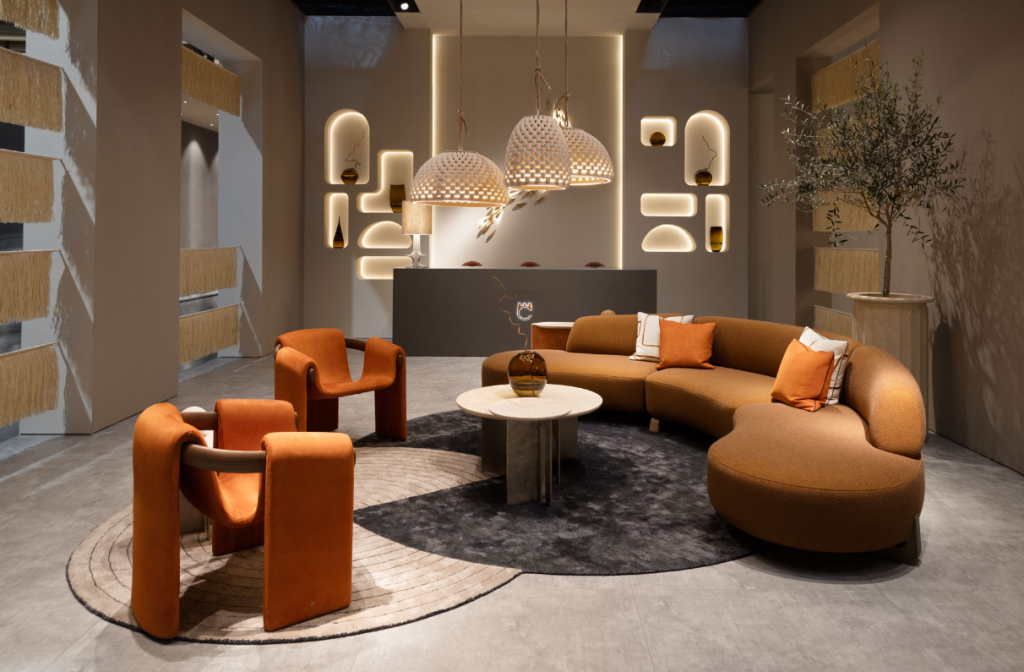Register now for our Additive Manufacturing Advantage online event for insights on AM developments in aerospace, space, and defense sectors from industry leaders!
In alliance with WASP, Paolo Castelli Spa has introduced ‘Haibu’, a 3D printed ceramic suspension lamp, at Salone del Mobile 2024.
This project explores the intersection of light, 3D printing techniques, and the properties of stoneware. Available in two variations from the Acquerello Collection by Paolo Castelli Spa, the Haibu suspension lamp features a long and tapered form in one version and a shorter, broader form in the other. For this project, WASP utilized its large-scale Liquid Deposition Modeling (LDM) 3D printers, specifically the WASP 40100 LDM and WASP 3MT LDM, to produce the lampshades.

Enhancing sustainability and functionality
According to WASP, this project focused on creating a mass-producible object inspired by the interwoven structure of a hive. Leveraging computational design techniques, a parametric model was developed specifically for Liquid Deposition Modeling (LDM) 3D printing.
This model allowed for the intricate design and extended the applicability of LDM 3D printing in this specific case. The production process involved depositing material in a suspended state, allowing it to cure and then self-assemble, resulting in a network of light-emitting slits.
Vittorio Paradiso, the designer behind Haibu, emphasized the importance of combining innovation with sustainability. The pendant lamps are crafted solely from ceramic, a natural material choice that supports eco-friendliness by reducing pollution. The Haibu lamp aims to provide a relaxing ambiance by combining technology with natural materials, and highlights the potential of large-scale 3D printing in modern design and manufacturing, says the company.
In another one of its projects, WASP revealed plans to repurpose unused areas beneath Milan’s central railway station, drawing inspiration from the countercultural community ‘Drop City’ in Colorado. The initiative involves the refurbishment of Tunnel 54 during Milan Design Week, focusing on innovative architectural and design ideas. WASP will utilize advanced 3D printing technologies such as the Crane WASP and Clay 3D Printing Farm to create furniture and office spaces directly at the site,
At the RHS Chelsea Flower Show 2024, WASP collaborated with landscape designer Giulio Giorgi to create the “World Child Cancer’s Nurturing Garden” using ceramic 3D printing technology.
This garden, funded by Project Giving Back and World Child Cancer UK, featured 3D printed clay blocks for raised beds, earning the RHS Environmental Innovation Award. Designed for hospitals, it promotes sensory experiences for children undergoing cancer treatment. WASP’s automation facilitated rapid production of over 600 ceramic modules, demonstrating sustainable garden construction without power tools.
Leveraging ceramic 3D printing
Apart from interior design and home decor applications, ceramic 3D printing is being used in the energy sector, and medical purposes among others.
Last year, the HyP3D project reported progress in high-pressure hydrogen production using ceramic 3D printing technology. With the goal of showcasing the potential of high-pressure Solid Oxide Electrolysis Cell (SOEC) technology, this initiative was funded by Horizon Europe. By combining SOEC and advanced ceramic 3D printing, HyP3D aimed to create an efficient and sustainable method for producing high-pressure hydrogen.
Ceramic tools are becoming more popular in the medical field because they are heat-resistant, wear-resistant, biocompatible, and easy to sterilize. Lithoz’s ceramic 3D printing technology enables novel designs and efficient mass production of medical tools.
Examples include arthroscopic knee shavers and dental burs, which have integrated optical channels and improved durability. These enhancements allow for cost-effective manufacturing, improving surgical precision and patient care. Additionally, Lithoz’s multi-material 3D printing combines ceramics and metals, broadening the possibilities for complex medical devices.
Join the Expert Committee for the 2024 3D Printing Industry Awards to help select the winners!
What 3D printing trends do the industry leaders anticipate this year?
What does the Future of 3D printing hold for the next 10 years?
To stay up to date with the latest 3D printing news, don’t forget to subscribe to the 3D Printing Industry newsletter or follow us on Twitter, or like our page on Facebook.
While you’re here, why not subscribe to our Youtube channel? Featuring discussion, debriefs, video shorts, and webinar replays.
Featured image shows Haibu Suspension lamps allowing gentle beams of light to escape. Photo via WASP.


